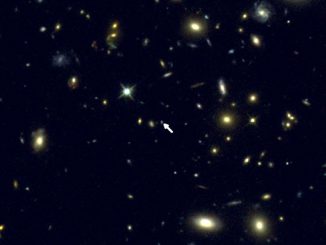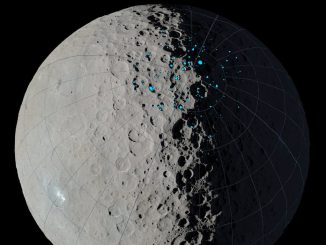
Keck Observatory measures oxygen in galaxy 12 billion years ago
Astronomers have made the first accurate measurement of the abundance of oxygen in a distant galaxy. Oxygen is created inside stars and released into interstellar gas when stars die. Quantifying the amount of oxygen, the third-most abundant chemical element in the universe, is key to understanding how matter cycles in and out of galaxies.


